Accessibility of sea ports (BiWi)
BiWi Accessibility of sea ports without inland waterway connection exemplified by the Jade-Weser Port Wilhelmshaven
Status
closed
Scientists
Prof. Dr.-Ing. Bettar Ould el Moctar
Dipl.-Ing. Jens Ley
Mahdi Ghesmi MEng.
Lahbib Zentari MEng.
Project Description
Since the construction and completion of the Jade-Weser-Port in September 2012, port facilities with an additional capacity of 2.7 million TEU per year are available. Further extensions are being planned. Currently, the hinterland accessibility is limited to trains (60%) or trucks (40%) as there is no direct access by river for inland vessels.
In order to avoid a traffic collapse on the roads in case of increasing trans-shipments, the complete port has to be re-structured, covering all three modes of transport. The ship as a transport mode is essential for transports to the hinterland. As a consequence, there is a need for a completely new ship design which is seaworthy and at the same time can be used efficiently on the inland waterways. The route concerned leads to the Weser estuary, via a short maritime area.
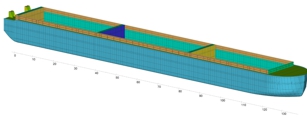
Fig. 1: Design of the seagoing barge

Tab. 1: Main particulars
A new transport concept was developed in collaboration with three project partners. The concept based on a pusher barge principle that can be operated in a restricted sea area close to shore. An inland barge was re-designed to withstand the wave induced loads at sea. The challenge was to predict the articulation forces between both vessels by direct numerical simulations. Those new technical challenges have not been covered by classification society rules and needed to be analysed in this project.
In summary, the project covered the following aspects:
- Development of numerical calculation tools for the prediction of seaworthiness of a seagoing convoy (multibody dynamics)
- Identification of critical wave scenarios and design waves
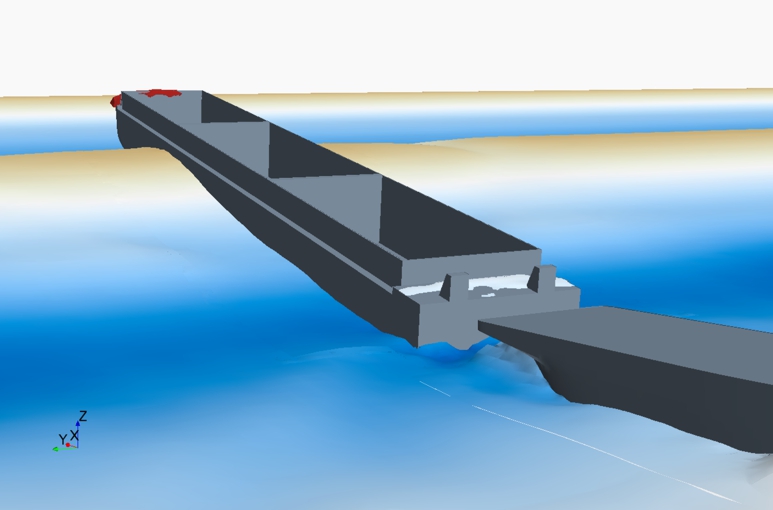
Fig. 2: Numerical simulation of the sea-going convoy
- Computation of linear and nonlinear articulation forces between both vessels as well as the nonlinear motions of the convoy including the hydrodynamic interaction and kinematics of the coupling technique.
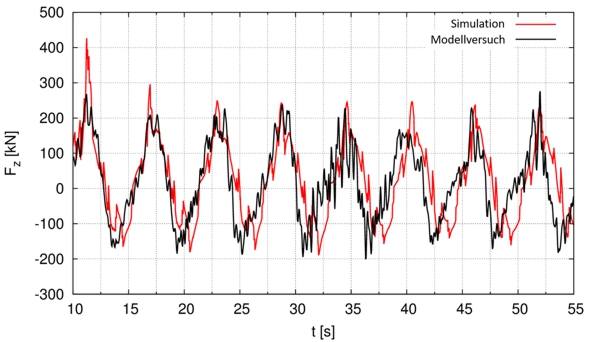
Fig. 3: Vertical loads on the coupling point induced by regular waves, simulations vs. physical model tests
- Direct global and local structural analyses of the hull and the coupling point by means of the Finite-Element Method. Buckling and fatigue strength were addressed as well.
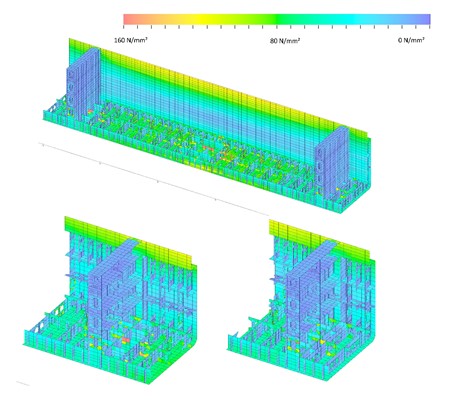
FIg. 4: Direct Analysis of global structural strength including articulation forces (Finite-Element Method)
- Evaluation of the intact- and damage stability of the convoy at sea
Funding
The project was funded by the Federal Ministry of Economics and Technology (BMWI).
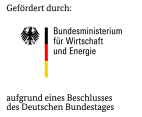
Funding reference: 03SX359B
Website
Weblinks
Final Report: https://www.tib.eu/suchen/id/TIBKAT:87329386X/
Publications
- Ley J., Ghesmi M., 2015, Ermittlung der welleninduzierten Lasten auf einen seegehenden Schubverband für die strukturelle Auslegung der Koppelstelle. Kolloquium Wechselwirkung Schiff/Wasserstraße mit Auswirkungen auf Nautik und schiffsinduzierte Belastungen, BAW, Karlsruhe, Germany.

